LC-2A Coupler — Technical Review, Specifications, Applications, and Maintenance Guide
Product: LC-2A Coupler
Short description: The LC-2A is a 2-way pneumatic coupler designed for compressed-air piping and air-tool hose connections. It incorporates an integrated automatic one-way shutoff valve and is available in multiple materials and configurations for industrial service.
Introduction
The LC-2A Coupler is a purpose-designed pneumatic quick-connect coupling engineered to support reliable, safe and repeatable connections in compressed-air distribution systems. In modern manufacturing, maintenance, and construction operations, quick-connect couplers such as the LC-2A play a critical role in minimizing downtime, preventing fluid loss, and enabling modularity of air tools and pneumatic equipment. This article provides an in-depth technical overview of the LC-2A, its materials and construction options, detailed specifications and dimensions, recommended applications, installation and maintenance best practices, and a balanced discussion of benefits and limitations for engineers, maintenance technicians, and purchasing professionals.
Technical Overview
The LC-2A Coupler is a 2-way pneumatic coupling that provides two connection ports and integrates an automatic one-way shutoff valve within the coupling body. The one-way shutoff valve prevents pressurized fluid from escaping when disconnecting a plug or when the coupler is not mated, reducing wasted air, contamination, and potential safety hazards. The coupler is intended primarily for compressed air systems but is also suitable for water and light oil applications within the approved operating pressure and temperature ranges.
Key mechanical attributes of the LC-2A include:
- Automatic internal shutoff valve that closes when a plug is withdrawn.
- Design optimized for smooth engagement and disengagement between plug and socket.
- Multiple material options — zinc die-cast (chrome-plated), steel, and brass — to optimize for corrosion resistance, mechanical strength, or cost.
- Available in standard 2-port configuration (high coupler) and offered alongside family variants (3-port, circular 3-port, and one-touch models).
- Typical operating pressure range up to 150 PSI (0–990 kPa) and temperature capability from 32–140°F (0–60°C).
From a functional perspective, the coupler provides a compact, robust interface between supply piping and tools or downstream equipment. The valve mechanism is spring-actuated and seats against an elastomeric seal when closed. When a compatible plug is inserted, axial movement compresses the valve, opening the flow path and establishing a sealed connection.
Functions and Typical Applications
The LC-2A is designed to serve four primary functions in industrial and commercial compressed-air systems:
- Enable fast, repeatable connections and disconnections of air hoses and tools.
- Minimize downtime and fluid loss via the integrated shutoff valve.
- Provide a secure mechanical interface resistant to vibration and torsion.
- Allow system flexibility by enabling modular tool and hose configurations.
Common application areas include:
- General manufacturing and assembly lines (pneumatic tools, fixtures, actuators).
- Maintenance, repair and operations (MRO) shops and service centers.
- Automotive repair and body shops (air wrenches, spray guns, sanders).
- Construction and equipment rental (portable compressors and tools).
- Process plants for pilot air lines, instrumentation purge, and plant air distribution.
- Light liquid handling where the media is water or light oil within rated conditions.
Specifications and Dimensions
Below is a comprehensive technical table presenting the product family, mechanical properties, operating ranges, and dimensional attributes. The values shown are typical manufacturer-specified ranges and nominal dimensions intended for engineering selection and installation planning.
| Model | Ports | Material Options | Max Operating Pressure | Operating Temp. Range | Nominal Flow Coefficient (Cv) | Nominal Weight | Overall Length (mm) | Body Diameter (mm) | Connection Type |
|---|---|---|---|---|---|---|---|---|---|
| LC-2A | 2 (High coupler) | Zinc die-cast (chrome), Steel, Brass | 0–150 PSI (0–990 kPa) | 32–140°F (0–60°C) | 0.45 (nominal) | 205 g | 72 mm | 28 mm | Hose tail / BSP/NPT adaptor options |
| LC-3 | 3 (Standard) | Zinc, Steel, Brass | 0–150 PSI | 32–140°F | 0.65 (nominal) | 260 g | 85 mm | 34 mm | Threaded / Multi-port |
| LC-3A | 3 (Circular) | Zinc, Steel, Brass | 0–150 PSI | 32–140°F | 0.62 (nominal) | 255 g | 80 mm | 36 mm | Circular multi-port |
| OLC-2A (One-Touch) | 2 (One-touch) | Zinc, Brass | 0–150 PSI | 32–140°F | 0.50 (nominal) | 195 g | 70 mm | 28 mm | Hose tail / Quick-fit |
| OLC-3 / OLC-3A | 3 (One-touch) | Zinc, Brass | 0–150 PSI | 32–140°F | 0.75 (nominal) | 285 g | 90 mm | 38 mm | Quick-fit / Multi-port |
Notes: The Cv values are nominal estimates derived from typical bore sizes and internal flow paths for couplers in this class; actual flow performance should be validated by pressure-drop testing in the target system. Connection types and adapter availability vary; consult the manufacturer for thread size, hose tail diameters, and sealing options.
Materials and Build Quality
The LC-2A is offered in three primary material families: zinc die-cast (chrome-plated), carbon steel (often plated), and brass. Each material selection has trade-offs in cost, corrosion resistance, mechanical durability, and suitability for different service media and environments. Below is a technical appraisal of the materials and how they affect coupler performance.
Zinc Die-Cast (Chrome-Plated)
Zinc die-cast bodies are a cost-effective option that provide good dimensional accuracy and complex shape capability. Chrome plating enhances surface hardness, improves wear resistance, and significantly increases corrosion resistance compared to bare zinc. In applications where weight and cost are important and where corrosive exposure is moderate (e.g., indoor manufacturing), chrome-plated zinc is often the preferred choice.
- Advantages: Lower cost, good dimensional control, enhanced surface finish with plating, lighter weight.
- Limitations: Lower ultimate tensile strength than steel; not ideal for heavy-duty mechanical abuse or high-temperature environments exceeding plating capability.
Steel
Steel-bodied couplers deliver superior mechanical strength, impact resistance, and fatigue life. Steel variants are typically plated (nickel, zinc, or black oxide) to reduce corrosion and extend life in harsh industrial environments. Steel is recommended when mechanical loading, torsional forces, or the risk of external damage are elevated.
- Advantages: High strength, excellent durability, resistance to mechanical damage.
- Limitations: Heavier mass; requires proper plating for corrosion resistance; may be over-specified for light-duty applications.
Brass
Brass provides excellent intrinsic corrosion resistance, particularly against atmospheric and water-based corrosion. It also demonstrates good machinability and sealing performance due to its dimensional stability. Brass couplers are commonly selected for outdoor, marine-proximate, or humid environments, and where contact with water or light oil is expected.
- Advantages: Excellent corrosion resistance, good sealing with elastomeric seals, predictable long-term behavior.
- Limitations: Higher material cost; lower yield strength than steel but adequate for typical pneumatic pressures.
Sealing elements inside the LC-2A (valve seats and O-rings) are typically elastomers such as NBR (nitrile) or optionally fluoroelastomer (Viton) for improved temperature and hydrocarbon compatibility. The selection of seal compound will strongly influence serviceable temperature range and compatibility with oils or specialty fluids.
Key Features
The LC-2A is designed with a set of features that make it suitable for industrial compressed-air systems. The following list summarizes the principal features with the technical implications for system designers and users.
- Integrated One-Way Shutoff Valve — Prevents air loss during disconnection and conserves upstream pressure; reduces contamination by minimizing backflow.
- Smooth Engagement — Optimized geometry for low insertion/extraction forces, reducing operator fatigue during repetitive tool changeovers.
- Multiple Material Choices — Zinc for cost-effectiveness, steel for durability, brass for corrosion resistance — enabling selection based on environment and mechanical requirements.
- Standardized Mounting Options — Configurable threaded or hose-tail connections ease integration with existing piping networks.
- Compact Footprint — Small envelope size to fit into tool racks, manifolds, and tight assembly stations.
- Serviceability — Replaceable valve components and O-rings simplify maintenance and reduce life-cycle costs.
Use Cases and Applications — Industry Examples
Below are detailed, real-world examples of how the LC-2A can be deployed across different industries, together with engineering considerations for each application.
1. Automotive Assembly and Repair
Automotive workshops and assembly plants commonly use a variety of pneumatic tools — impact wrenches, pneumatic ratchets, sanders, and spray guns. The LC-2A’s automatic shutoff limits air loss when tools are disconnected from hose reels, contributing to energy savings and quicker tool changes. For assembly lines requiring frequent tool swaps, specifying the LC-2A in brass or plated steel increases durability in high-cycling environments.
2. General Manufacturing and Automation
In assembly automation, quick-change couplings are often integrated into tool changers for robot end-effectors or station tooling. The LC-2A’s compact size and reliable shutoff make it suitable for both stationary manifolds and on-moving arms provided the material choice addresses dynamic loading and vibration.
3. Maintenance, Repair, and Operations (MRO)
MRO shops benefit from the LC-2A’s compatibility with standard hoses and its durable construction. The quick-disconnect feature speeds maintenance turnarounds and reduces time to isolate downstream equipment during troubleshooting.
4. Food and Beverage (Non-Contact Lines)
For non-contact air supply lines in food plants (e.g., air-blow drying lines), brass couplers provide corrosion resistance and minimal contamination risk. For direct contact with food or aggressive cleaning chemicals, confirm seal material compatibility and surface finish to meet hygienic standards.
5. Construction and Portable Compressor Use
On construction sites, couplers see high wear and rough handling. Here the steel variant is appropriate, and the LC-2A’s shutoff prevents accidental depressurization of hoses when switching tools, improving safety on site.
Comparison with Other Models and Alternatives
To assist engineering selection, the table below compares the LC-2A with related models in the same family and with common quick-connect alternatives. Attributes listed include ports, typical flow, mechanical robustness, and recommended deployment scenarios.
| Model | Ports | Typical Cv | Material Options | Recommended Use | Advantages | Limitations |
|---|---|---|---|---|---|---|
| LC-2A | 2 | 0.45 | Zinc / Steel / Brass | General compressed air, tool hookups | Automatic shutoff, compact, multiple materials | Moderate Cv for high-volume air demand |
| LC-3 | 3 | 0.65 | Zinc / Steel / Brass | Multi-drop manifolds, branch lines | Higher combined flow, flexible distribution | Larger footprint, heavier |
| LC-3A | 3 (circular) | 0.62 | Zinc / Steel / Brass | Round manifold assemblies | Compact multi-port arrangement | Slightly lower flow per port |
| OLC-2A (One-Touch) | 2 | 0.50 | Zinc / Brass | Fast-change operations, tool reels | Faster connect/disconnect, ergonomic | One-touch mechanisms may be more sensitive to debris |
| Generic Industrial Quick-Connect | 1–2 | 0.3–1.0 | Brass / Stainless / Steel | Broad use across industries | Wide range of sizes and ratings | Feature set varies; verify shutoff type |
When choosing among family members or competitor couplers, evaluate flow capacity, material compatibility, connection geometry, sealing material, and lifecycle maintenance requirements. The LC family provides a good balance of compact design and integrated shutoff for many industrial applications.
Benefits and Limitations — Technical Perspective
Benefits
- Air Loss Reduction: Integrated shutoff significantly reduces the volume of compressed air lost during disconnection, improving system efficiency and lowering energy costs.
- Operational Speed: Quick-connect design accelerates tool changeovers and line reconfigurations, improving productivity.
- Material Flexibility: Multiple body materials allow selection for corrosion environments, cost constraints, or mechanical durability needs.
- Serviceability: Replaceable seals and valves reduce total lifecycle cost compared to non-serviceable couplings.
- Safety: Built-in shutoff mitigates risks associated with sudden hose depressurization and flying debris.
Limitations
- Flow Restriction: As a compact 2-way coupler, the LC-2A has a finite flow capacity; for high-flow applications or long hose runs, pressure-drop should be evaluated and larger bore couplers considered.
- Temperature Limits: Standard elastomeric seals limit the working temperature to typical ranges (32–140°F / 0–60°C); for elevated temperatures or steam service alternative constructions are required.
- Chemical Compatibility: Standard seals (e.g., NBR) are not suitable for strong acids, ketones, or certain solvents without upgrading to compatible elastomers.
- Contaminant Sensitivity: The internal valve mechanism can be sensitive to particulates; filters or particulate traps may be necessary in dirty environments.
Installation and Integration Guidance
Proper installation is essential to achieve reliable, leak-free performance from the LC-2A coupler. The following guidance is intended for qualified maintenance personnel and installation technicians.
Mounting and Connection
- Verify the chosen coupler material and seal compound are compatible with the system media (air, water, oil) and the operating temperature/pressure ranges.
- Install using the correct thread adapters or hose tail fittings. Ensure threads are clean and undamaged before application.
- Use appropriate thread sealing methods (PTFE tape or pipe sealant) on tapered threads; on parallel threads use an O-ring and retainer where specified. Avoid sealing compounds that can migrate into the coupler bore and contaminate seals or valves.
- Support piping and hoses to avoid transmitting shear or bending loads to the coupler body. Frequent lateral forces can cause premature seal wear or mechanical loosening.
- During assembly, ensure the coupler is oriented to allow free movement of the mating plug and provides adequate clearance for operator access.
Initial Commissioning
- Prior to system pressurization, verify that all ports are capped or connected to prevent ingress of debris.
- Partially pressurize the line and inspect all connections with soapy water or an approved leak detection fluid to identify leaks. Tighten or reseal as required.
- Cycle the coupler several times under low pressure to seat the internal valve and ensure smooth operation before subjecting it to full working pressure.
Maintenance and Care Guide
Regular maintenance extends the life of the LC-2A coupler and maintains system efficiency. Below is a structured maintenance schedule and practical procedures for inspection, cleaning, replacement, and troubleshooting.
Routine Inspection (Weekly to Monthly)
- Visual check for external damage, corrosion, or missing components.
- Operational test by connecting and disconnecting a mating plug to verify smooth movement and proper sealing.
- Leak test under operating pressure using a bubble test or ultrasonic leak detector. Address any leaks immediately.
Periodic Preventive Maintenance (Quarterly)
- Clean external surfaces with a lint-free cloth and mild detergent if needed to remove grease and grime.
- Inspect internal valve and O-ring condition if the coupler is designed for field servicing. Replace worn or hardened seals.
- Check plating for flaking or area of exposed base metal; touch up with compatible corrosion inhibitor or consider replacement if structural integrity is compromised.
Seal and Valve Replacement
Replacement intervals depend on cycle frequency, media type, and environmental exposure. A typical replacement cadence for frequently-cycled couplers operating in clean air environments may be 12–24 months; harsher conditions warrant more frequent inspection and earlier replacement.
- Depressurize system and relieve trapped pressure prior to maintenance.
- Disassemble the coupler per manufacturer’s instructions (retain wrenches with appropriate size to avoid over-torquing).
- Remove old O-rings and valve components and clean internal bores to remove particulates.
- Install manufacturer-specified replacement seals (ensure correct elastomer selection for media and temperature).
- Reassemble, pressure-check for leaks, and cycle several times to seat the new seals.
Cleaning and Contamination Control
- Use filtered supply air and install particulate or coalescing filters upstream of coupler manifolds in contaminated environments.
- Avoid solvents that swell or degrade elastomer seals. Use manufacturer-recommended cleaning agents.
- If entrained liquids are present in the system, consider drain traps and separators to reduce washout and seal degradation.
Troubleshooting Common Issues
The following table outlines typical failure modes, root causes, and corrective actions specific to quick-connect couplers like the LC-2A.
| Symptom | Possible Causes | Recommended Action |
|---|---|---|
| Leak at connection | Worn O-ring, damaged threads, insufficient thread sealant | Replace O-ring, clean and re-tape threads, torque to spec |
| Difficulty connecting/disconnecting | Debris in bore, corroded surfaces, damaged latch mechanism | Clean internal components, lubricate with compatible grease, replace damaged parts |
| Downstream pressure loss after disconnect | Faulty shutoff valve, worn valve seat | Replace valve components and seat, inspect for foreign objects |
| Excessive pressure drop during operation | Restricted bore, internal obstruction, undersized coupler | Inspect bore, clean debris, consider larger bore coupler for high-flow applications |
Safety Considerations
Working with pressurized systems requires adherence to safety protocols to prevent personal injury and equipment damage. For LC-2A installations and maintenance follow these guidelines:
- Always depressurize and lock out/tag out the air supply before disconnecting or servicing couplers.
- Wear appropriate PPE — safety glasses, gloves, and hearing protection when working around pressurized systems and pneumatic tools.
- Confirm that the coupler’s pressure rating exceeds the maximum system pressure, including any pressure spikes.
- Do not exceed the temperature and media compatibility ratings for the selected seal compound and body material.
- When replacing components, use only manufacturer-specified parts to maintain pressure containment and safe mechanical function.
Selection Checklist — Engineering Considerations
Use the checklist below to evaluate whether the LC-2A is appropriate for a given application and to select options that match system requirements.
- Media type (air, water, oil) — confirm seal material compatibility.
- Maximum system pressure — ensure coupler rated above this value with margin.
- Operating temperature range — select elastomer and body material compatible with temperatures encountered.
- Expected flow rates — validate Cv and pressure-drop against system requirements.
- Environmental exposure — choose brass or plated steel where corrosion or physical abuse is expected.
- Cycle frequency — high-cycle applications may require premium materials and more frequent maintenance.
- Connection style — confirm thread type, hose tail size, or quick-fit geometry to match existing infrastructure.
- Serviceability requirements — select couplers with replaceable seals and accessible valve components for critical applications.
Procurement and Lifecycle Cost Considerations
Life-cycle cost analysis for couplers should incorporate initial purchase price, expected service life, maintenance intervals, downtime costs associated with replacements, and energy savings from reduced air loss. Specific points to consider:
- Initial material choice affects purchase cost but also the lifetime between replacements (e.g., brass or plated steel often yield longer service life in corrosive environments).
- Energy costs from compressed-air leakage can be significant — using automatic shutoff couplers such as the LC-2A reduces continuous bleed losses.
- Field-serviceable designs reduce maintenance downtime and spare-part inventory cost relative to non-serviceable units.
- Standardizing on a single family of couplers across a plant simplifies spare parts management and training for maintenance personnel.
Conclusion
The LC-2A Coupler is a technically robust, versatile 2-way pneumatic quick-connect solution designed for compressed-air systems, offering an integrated automatic one-way shutoff valve to minimize fluid loss during connection cycles. With multiple material options—zinc die-cast (chrome-plated), steel, and brass—the LC-2A can be tailored to a wide range of industrial environments. Its compact design, smooth engagement characteristics, and serviceability make it an attractive choice for manufacturing, maintenance, automotive, and construction sectors.
When selecting the LC-2A, engineers should evaluate flow requirements, media compatibility, environmental exposure, and lifecycle maintenance needs. Regular inspection and preventive maintenance will protect performance and extend service life. For high-cycle, high-flow, or aggressive-environment applications, consider the alternative LC family members or one-touch variants highlighted in the comparison table above.
In summary, the LC-2A Coupler provides an efficient balance of performance, safety, and maintainability for common pneumatic connection tasks. Proper material selection, installation, and maintenance unlock the full potential of the device, delivering reliable connectivity and reduced operational losses across a broad set of industrial use cases.
Appendix — Quick Reference
- Operating Pressure: 0–150 PSI (0–990 kPa)
- Operating Temperature: 32–140°F (0–60°C)
- Common Materials: Zinc die-cast (chrome-plated), Steel, Brass
- Nominal Weight (LC-2A): 205 g
- Typical Cv (LC-2A): ~0.45 (nominal, verify in application)
If you require CAD drawings, specific thread sizes, or test-certified performance data (leak rates, pressure-drop curves), contact the manufacturer’s technical support to obtain certified dimensional drawings and performance curves for system-level design validation.

 Tiếng Việt
Tiếng Việt
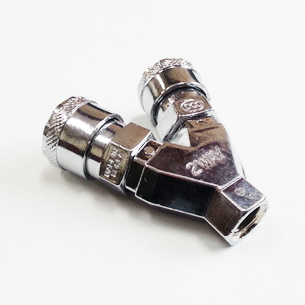
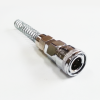
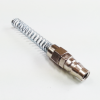
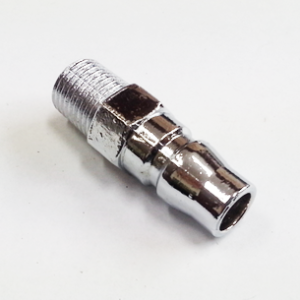
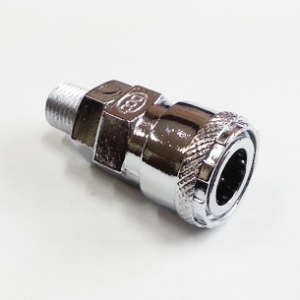
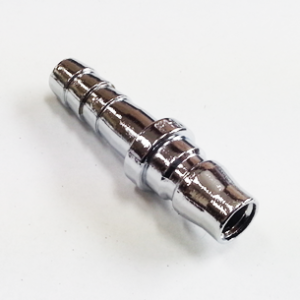
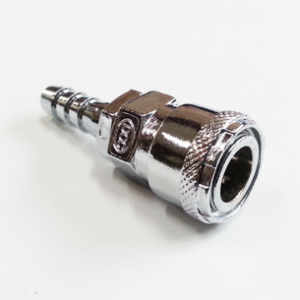
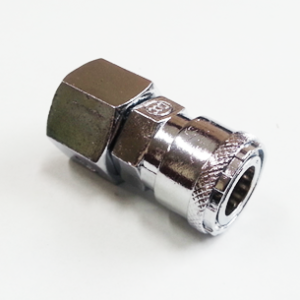
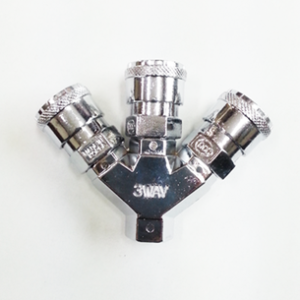
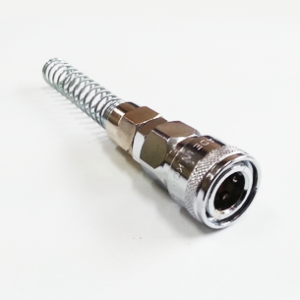
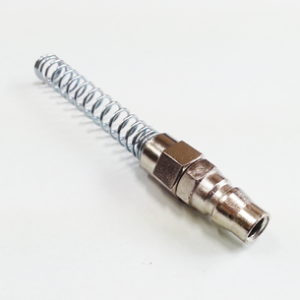
Reviews
There are no reviews yet.